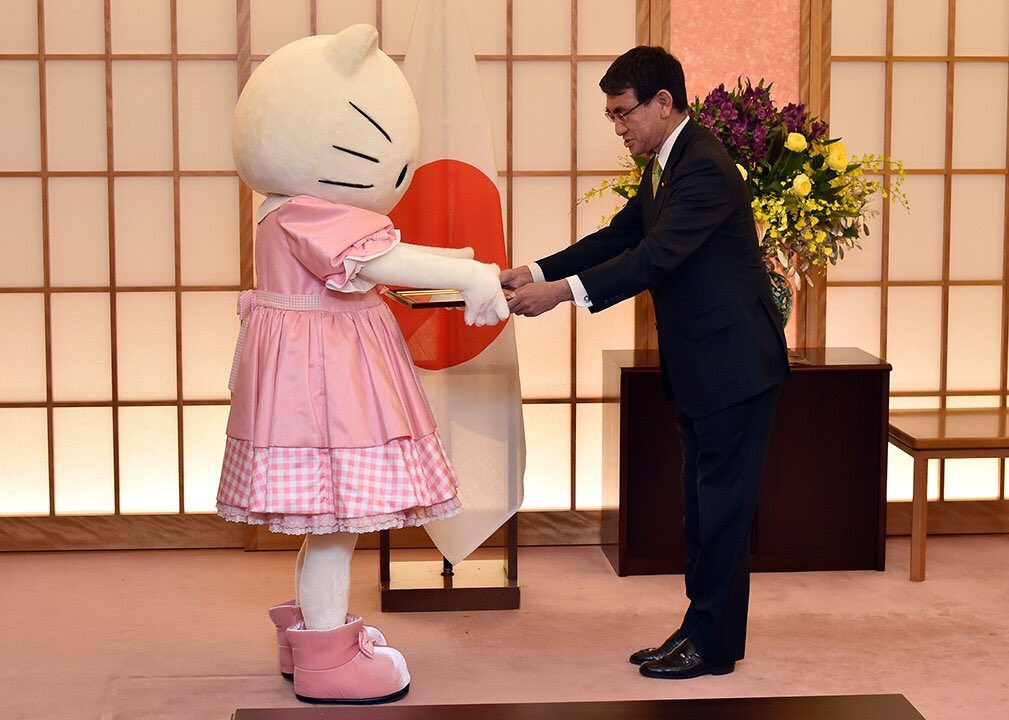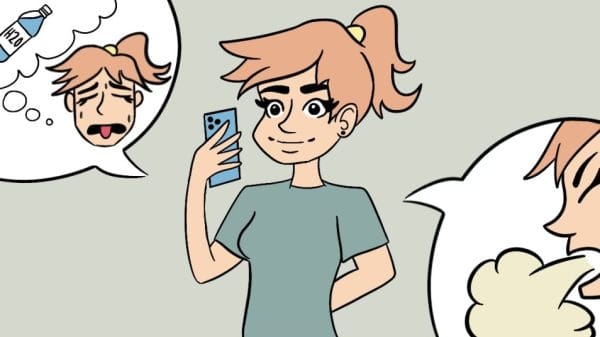In April 2017, Japan announced its bid for Osaka to be the host of the next world’s fair, Expo 2025.
At present, they face stiff competition from France, Russia, and Azerbaijan for this great honor. However, the Japanese government understands that the country has one great strength that its competitors lack: its popular culture. So, they recently appointed two of their cultural icons, Pikachu and Hello Kitty, as special ambassadors to promote their campaign.
Taro Kono, Minister of Foreign Affairs, announced it himself on Twitter. His post included pictures of himself presenting the appointment letters to the mascots in person. Japan Times quotes him as saying at the event itself, “I would like for you to represent Japan and proactively (promote) the attraction of Osaka inside and outside of the country.”
The Bureau International des Expositions will choose the next host city in November 2018. Until then, Nintendo and Sanrio’s oft-merchandized characters will appear in promotional items for Osaka’s bid. So will two other special ambassadors: Keisuke Honda, popular footballer, and Shinya Yamanaka, winner of the Nobel Prize in Medicine.
Why Does This Keep Happening?
This is yet another example of Japan’s recent tactic of leveraging its pop culture to promote international events. In 2008, the government designated Hello Kitty as tourism ambassador to Hong Kong and China. Four years earlier, UNICEF gave her the title “Special Friend to Children” after she raised $150,000 for female education programs.
It’s not just Hello Kitty, either. In 2015, Tokyo’s Shinjuku ward made Godzilla not just a tourism ambassador, but an official citizen. In 2008, Japan’s foreign ministry named cartoon character Doraemon the country’s “anime ambassador.” One official stated that this should help people worldwide “understand Japanese anime better and deepen their interest in Japanese culture.”
These may just seem like PR stunts, but that is just the surface of a broader campaign dubbed “Cool Japan.” The Ministry of Economy, Trade and Industry is working to promote Japan’s “creative industries” throughout the world, particularly East Asia. These include anime, manga, art, music, food, and fashion, among others. This emphasis comes from economics: Japan’s auto and electronics industries now face challenges from other Asian powers, but they remain unrivaled in their creative industries.
How Did Cool Japan Come About?
According to Koichi Iwabuchi’s paper “Pop-Culture Diplomacy in Japan,” the idea stems from the end of World War II. Japan desired international influence and a seat on the world stage, so they conquered Pacific islands and invaded Manchuria. This imperialism, and their many war crimes, gave it few allies during the conflict and little sympathy after their defeat. Postwar Japan knew that if they wanted anyone to like them again, they needed to rehabilitate their image. They realized that instead of using “hard power,” meaning forcing others to follow their will, they could use “soft power.”
Soft power is simply the ability to get people to do what you want without coercion. A strong way for a country to do that is exporting their popular culture. If people find it appealing, their overall perception of the country will be more positive. So once Japan started sending television programs abroad instead of warships, its popularity began to climb. Once it returned to the world stage and its former enemies’ good graces, they knew they had to keep going.
Obviously, there’s more to Japan’s geopolitical shift than anime. However, that image rehabilitation was crucial for getting its old foes and victims to start looking past their wartime atrocities. As of 2017, the nation ranks sixth on The Soft Power 30, an index assessing which countries exert the most soft power. There are reasons the government is focusing on this so much.

Lost in this discussion: the PR stunts that are just PR stunts. Here’s a brief story about the Pikachu train.
Featured Image Via













